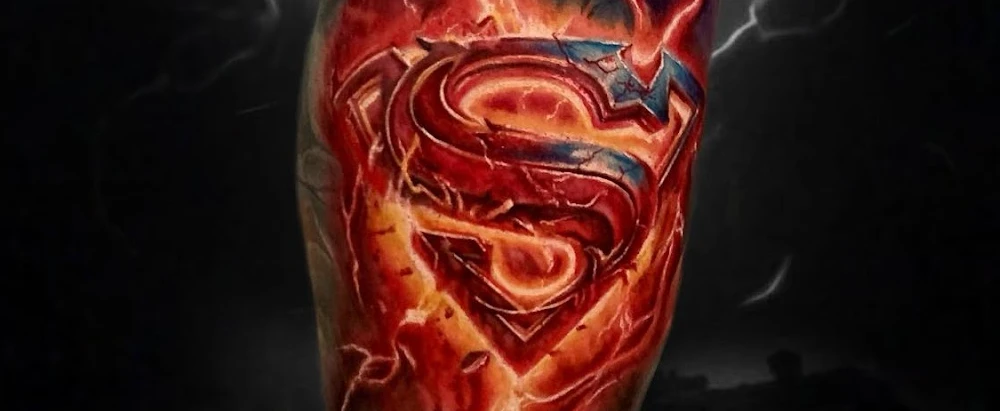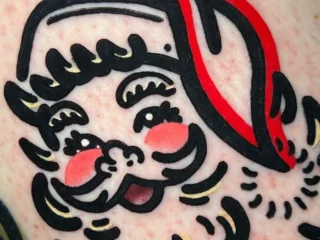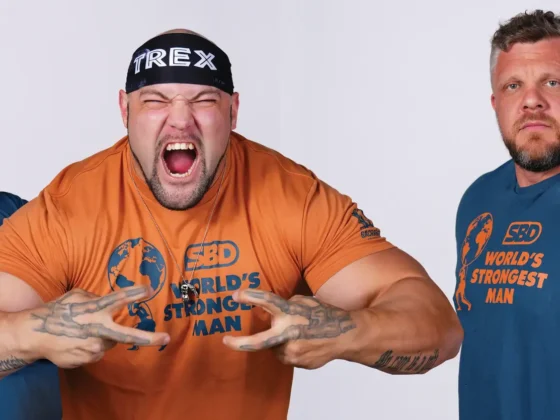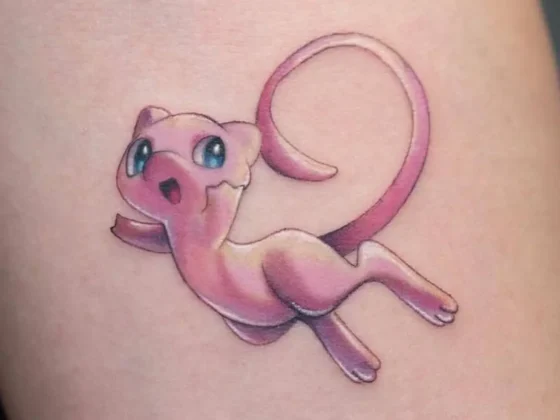Inked Mag Staff
February 21st, 2024
Truly Painless Tattoos
Going Under Anesthesia to Get a Tattoo: A Controversial Trend

Tattoos have become exponentially popular over the past few years, with people seeking unique and meaningful ways to express themselves. While the process of getting a tattoo typically involves some discomfort, an emerging trend has caught the attention of both enthusiasts and skeptics alike—going under anesthesia for a painless tattoo experience. This article will explore the concept of using anesthesia during tattoo procedures, discussing its pros, cons, and the potential risks involved. We went to Artem Bor, a CRNA, MSN, APRN of Elite Anesthesia Ink and Romeo Lacoste, a world renown tattooer of The California Dream Tattoo Shop for their input on the matter.
Understanding Anesthesia
Anesthesia is a medical technique that aims to induce a temporary state of unconsciousness or numbness to relieve pain during surgical or medical procedures. It involves the use of various medications, often administered by an anesthesiologist, to achieve the desired effect. While anesthesia is commonly used in major surgeries, its application in the context of tattoos raises ethical and safety concerns.
Artem Bor (CRNA, MSN, APRN) of Elite Anesthesia Ink explains that client safety is their top priority. They predominantly use moderate IV sedation anesthesia. With moderate IV sedation, the client is in deep sleep, breathing spontaneously with supplemental oxygen. Bor continues that they utilize American Society of Anesthesiologists (ASA) standard monitors, including continuous EKG, oxygen blood saturation and blood pressure, and continuous vigilance from a professional, licensed anesthesia provider who continually watches and monitors the client.
Before going under, clients must complete and pass a pre-anesthesia/medical clearance. Based on the client’s clearance and ASA score, Bor’s team then determines the safest anesthesia for the client. In some cases, clients with an overweight BMI may not handle sedation well, requiring general anesthesia—this is when the anesthesia provider assists with breathing. Bor delineates that his team prefers to use MAC anesthesia—this is when the client is deep asleep and breathing spontaneously. The American Society of Anesthesiologists offers a detailed chart that Bor and his team refer to in order to ensure their client(s) aren’t falling into the categories that prohibit them from being placed under anesthesia. If the client does fall into these categories, they are considered “high risk” and are not eligible for the service and ultimately will not be able to use it.
The Appeal of Painless Tattoos
Pain tolerance varies from person to person, and while many individuals embrace the pain as part of the tattoo process, others find it unbearable. The appeal of painless tattoos through anesthesia lies in the promise of a comfortable and stress-free experience. When the area is numbed, the procedure can be performed without any significant discomfort, allowing individuals with low pain thresholds or medical conditions to enjoy the benefits of body art. We asked Romeo Lacoste what he thought about the stigma of being tattooed under anesthesia as “taking the easy way” and he responded with, “Everyone is entitled to their own opinion, but there is probably something to learn from those who work so hard to afford these sorts of luxuries. If you can afford the additional cost for anesthesia, be healthy enough to endure the procedure and healing process, I honestly don’t see why anyone else’s opinion would matter.”
Lacoste maintains that tattooing clients under anesthesia is something that sets him and his team apart from others in the tattoo industry. He’s never been one to concern himself with what “the norm” is or what everyone else is doing. Lacoste continues that he personally would have never achieved a fraction of what he has in his career if he simply followed what the next artist or shop was doing. With that being said, this sort of collaboration has proven to be quite fulfilling for him and his team. He feels it might be an unpopular opinion in tattooing, but together everyone can achieve more. Furthermore, Lacoste states it’s “truly rewarding when you work with others towards a common goal. We all get the credit in a collaborative way and when you’re doing something like this with the right people, it is enough.”

Timing and Limitations
The first thought one may have in regard to getting a tattoo under anesthesia is, “how long?” How long can you be under, how long is too long, how short is too short, are there any issues with either? Bor gave us an anesthesiologist’s insight on the best timeframes and options. He simply states that there is no limit to the amount of tattooing when the client is asleep. From an anesthesiologist’s point of view, what matters is the duration of time the client is under anesthesia.
For example, by law in the state of Florida, a client cannot be anesthetized for more than eight hours in an outpatient setting (surgery center). Any procedure requiring anesthesia for over eight hours must be done in a hospital setting. At Elite Anesthesia Ink, they provide anesthesia services for a maximum of eight hours. Alternatively, Bor stated that they can also safely and easily provide anesthesia for as little as a one-hour session. But when it comes to the payment aspect, Bor clarified that unfortunately, the logistics (for a one-hour session) are not profitable for their company financially. This is something he said they’re working on, but for the time being, they must charge for a four-hour minimum, the justification being for the logistics of the medical center and anesthesia team setup. It takes time to evaluate a client, obtain clearance, set up an anesthesia plan, have an anesthesia provider, recovery team, etc. As of right now, getting tattooed under anesthesia continues to be a luxury of the opulent.
Safety Concerns and Precautions
- Choosing Qualified Professionals: Anesthesia-assisted tattoo procedures should only be performed by licensed and experienced medical professionals, such as anesthesiologists or nurse anesthetists, collaborating with skilled tattoo artists.
- Comprehensive Medical Evaluation: Individuals considering anesthesia for their tattoos must undergo a thorough medical evaluation to assess their suitability and identify any potential contraindications.
- Informed Consent: Prior to the procedure, individuals must fully understand the risks, benefits and alternatives associated with anesthesia-assisted tattoos, giving informed consent based on their own judgment.

The Importance of Proper Aftercare
After receiving an anesthesia-assisted tattoo, proper aftercare becomes crucial. The recovery process may differ from traditional tattoos, and individuals must follow the given instructions meticulously to avoid complications such as infection or delayed healing.
During our interview, Bor commented that with regard to healing and amount of area covered, their establishment does not recommend, for example, a full-body suit done in eight hours. Bor continues that this would cause the body to have a challenging recovery with increased risks of stress, infection, etc. because the area that is healing is so large. Instead, they partner directly with the client, tattoo artist, and anesthesia team to decide the safest amount of ink/time per session. This decision is highly individualized and tailored to each client.
Furthermore, Bor explains that a tattoo is considered “an open skin wound” and that anesthesia IV sedation (the method they use) doesn’t affect the healing process and helps with pain management during the tattoo process. Elite Anesthesia Ink provides specific instructions for proper aftercare as well as what to expect during the healing process. Below are examples of recovery expectations:
– Expect significant swelling, bruising, and tenderness for the first 3-5 days.
– Use ice packs to help reduce swelling.
– Take over-the-counter pain medication as directed to manage discomfort, avoiding aspirin which can increase bleeding.
These are just a few examples. If you already have tattoos, then you understand that these guidelines are exactly what you follow while healing any tattoo, showing us that going under anesthesia for a tattoo doesn’t necessarily affect the healing process as some have previously thought.
The trend of going under anesthesia to get a tattoo offers a novel solution for those who find the pain unbearable or have medical conditions preventing them from undergoing traditional tattooing methods. While it comes with advantages such as pain management and increased accessibility, the use of anesthesia in tattooing also presents risks and ethical considerations. Ultimately, the decision to pursue anesthesia-assisted tattoos should be made after careful consideration, weighing the potential benefits against the associated risks, ensuring the involvement of qualified professionals, and prioritizing overall safety and wellbeing.

Editor's Picks
Bridging Classical Art and Modern Tattooing
Esteban Rodriguez brings the discipline of classical fine art to the living canvas of skin, creating hyper-realistic tattoos that merge technical mastery with emotional depth.
Show Your Ink Fashions Brings Custom Style to Tattoo Culture
Show Your Ink Fashions creates custom shirts designed to showcase your tattoos as wearable art, blending fashion with personal expression.
The Ultimate “Superman” Tattoo Roundup: Just in Time for Superman’s Return to Screens
With Superman’s big return to theaters, fans are revisiting some of the most iconic ink inspired by the Man of Steel.














